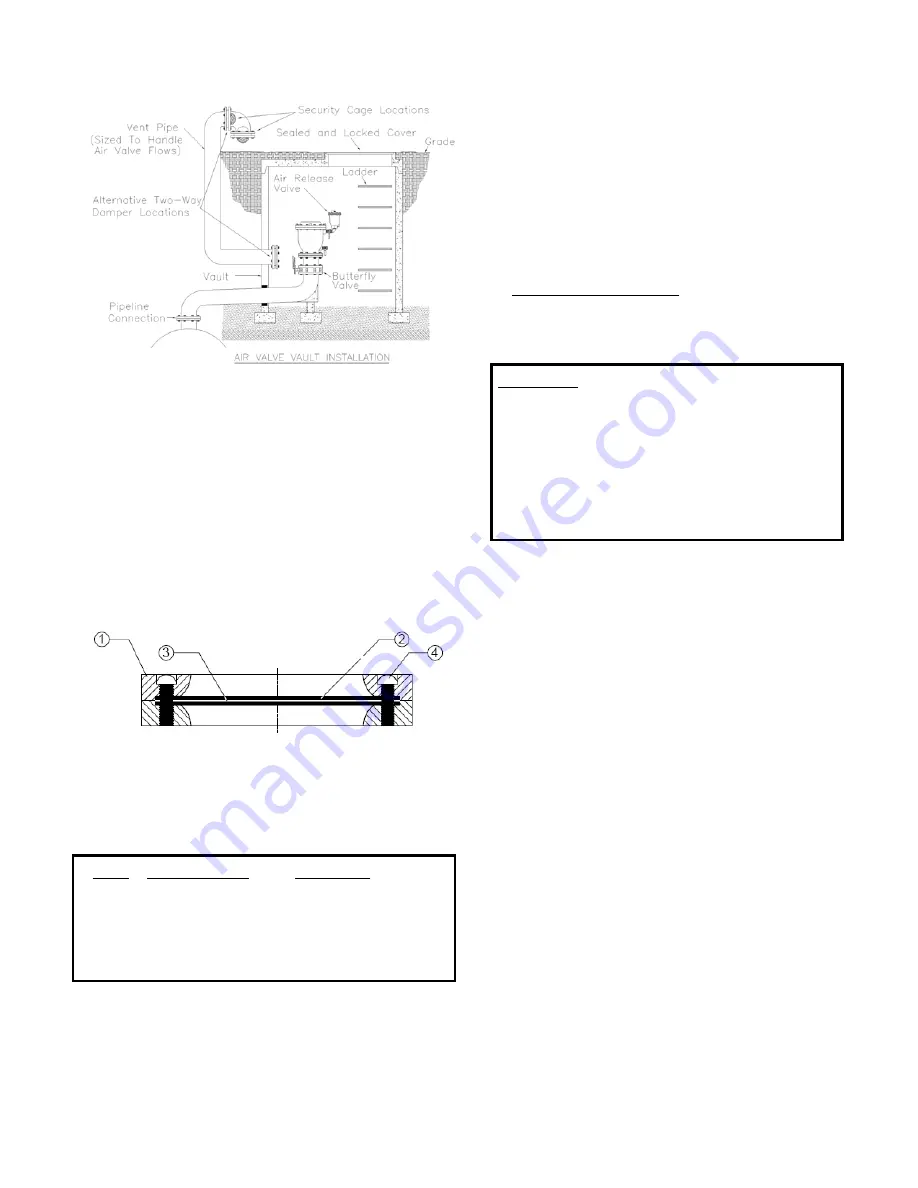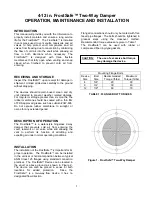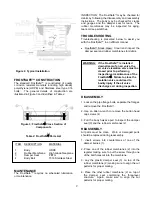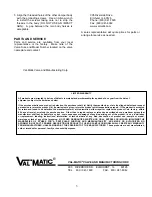
2
ITEM DESCRIPTION MATERIAL
1 Body
HDPE
2
Rubber Membrane
High Grade Neoprene
3 Damper
Seal
PETG
4
Body Bolt
T316 Stainless Steel
WARNING: If the FrostSafe™ is installed
downstream of an air valve, the
air valve’s isolation valve must be
closed prior to performing
inspection or maintenance of the
FrostSafe
™
. Failure to close the
isolation valve could lead to
bodily injury if the air valve
discharges air during inspection.
Figure 2. Typical Installation
FROSTSAFE™ CONSTRUCTION
The standard FrostSafe™ is constructed of quality
corrosion resistant materials including high density
polyethylene (HDPE) and Stainless steel type 316
bolts. The general details of construction are
illustrated in Figure 3 and identified in Table 2.
Figure 3: FrostSafe
™
Cross Section of
Components
Table 2: FrostSafe
™
Parts List
MAINTENANCE
The FrostSafe™ requires no scheduled lubrication
or maintenance.
INSPECTION: The FrostSafe
™
may be checked for
debris by following the disassembly and reassembly
instructions. The body may be checked for cracks
and gouges and the damper seal for tears. The
rubber membranes may be inspected for aging,
tears or deep scratches.
TROUBLESHOOTING
Troubleshooting is presented below to assist you
with the FrostSafe™ in an efficient manner.
•
FrostSafe
™
Stuck Open: Clean and inspect the
damper seal and rubber membranes for debris.
DISASSEMBLY
1. Loosen the pipe flange bolts, separate the flanges
and remove the FrostSafe
™
.
2. Use an Allen wrench to remove the button head
cap screws (4).
3. Pull the body halves apart to inspect the damper
seal (3) and the rubber membranes (2).
REASSEMBLY
All parts must be clean. Worn or damaged parts
should be replaced during reassembly.
1. Insert screws into counterbores of one of the
damper bodies (1).
2. Place one of the rubber membranes (2) into the
register making sure to put the screw through one
of the bolt holes cut into the membrane.
3. Lay the plastic damper seal (3) on top of the
rubber membrane (2) making sure to align the cut
patterns for proper mating.
4. Place the other rubber membrane (2) on top of
the damper seal completing the three-layer
structure. Again, make sure to align the cut
patterns for proper mating.






